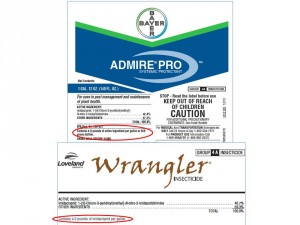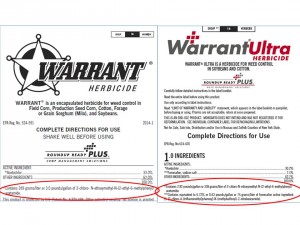Know Your Products!!…and the Difference Between Trade Names and Chemical Names for Products Used in Cotton (Collins, York, Edmisten, Reisig)
go.ncsu.edu/readext?404832
en Español / em Português
El inglés es el idioma de control de esta página. En la medida en que haya algún conflicto entre la traducción al inglés y la traducción, el inglés prevalece.
Al hacer clic en el enlace de traducción se activa un servicio de traducción gratuito para convertir la página al español. Al igual que con cualquier traducción por Internet, la conversión no es sensible al contexto y puede que no traduzca el texto en su significado original. NC State Extension no garantiza la exactitud del texto traducido. Por favor, tenga en cuenta que algunas aplicaciones y/o servicios pueden no funcionar como se espera cuando se traducen.
Português
Inglês é o idioma de controle desta página. Na medida que haja algum conflito entre o texto original em Inglês e a tradução, o Inglês prevalece.
Ao clicar no link de tradução, um serviço gratuito de tradução será ativado para converter a página para o Português. Como em qualquer tradução pela internet, a conversão não é sensivel ao contexto e pode não ocorrer a tradução para o significado orginal. O serviço de Extensão da Carolina do Norte (NC State Extension) não garante a exatidão do texto traduzido. Por favor, observe que algumas funções ou serviços podem não funcionar como esperado após a tradução.
English
English is the controlling language of this page. To the extent there is any conflict between the English text and the translation, English controls.
Clicking on the translation link activates a free translation service to convert the page to Spanish. As with any Internet translation, the conversion is not context-sensitive and may not translate the text to its original meaning. NC State Extension does not guarantee the accuracy of the translated text. Please note that some applications and/or services may not function as expected when translated.
Collapse ▲As is the case in most years, there are several new generic products labeled for use in cotton available for purchase in 2016. Generic products can often offer producers effective and comparable options to brand name products, and can be cheaper in many cases. The challenge with the long list of available products however, is keeping track of what these products are and what they contain. Generics occasionally may contain a lower concentration of active ingredient (lbs a.i. per gallon), and therefore should be applied at higher rates per acre (oz/A) to achieve the same rate of active ingredient per acre (lbs a.i./A) and thereby similar control. Additionally, some products may have very similar brand names, but can be quite different in terms of chemistry which may limit when and how these products can be used. When purchasing any product, it is ABSOLUTELY CRITICAL to know EXACTLY what you are purchasing before you put it into the spray tank. This same principle applies to all products (insecticides, herbicides, fungicides, harvest aids, growth regulators, etc.). Failure to do so could result in three types of error, discussed below.
- Failing to apply the appropriate rate of product: If a generic product has a different concentration of active ingredient than the brand name product, you could make the mistake of not applying enough product per acre, resulting in poor control and possibly necessitating another application. In this scenario, your money could be lost in the form of a wasted purchase, lower yields and/or the expense of making another application to control what should’ve been controlled in the first application. See the example below:
In this example, Admire Pro and Wrangler are both imidacloprid-containing products. Both are labeled for use in cotton and both are effective when used at comparable rates of active ingredient per acre. However, by reading the fine print on the label, it is easy to see that Admire Pro contains a higher concentration of imidacloprid (4.6 lbs a.i. per gallon) than Wrangler (4 lbs a.i. per gallon). Therefore, if you intend on using the equivalent rate to that of 9.2 oz/A of Admire Pro, you would need to apply 10.5 oz/A of Wrangler to achieve the same rate of active ingredient per acre. The common mistake that is made is when growers assume these products are the same, and apply 9.2 oz/A of Wrangler which is actually equivalent to only 8 oz/A of Admire Pro. This difference may seem miniscule, but can result in a major difference in control. The same applies to many other products as well.
The above example illustrates a scenario where a generic product has a lower concentration of active ingredient. There are several cases where a generic product may have a higher concentration of active ingredient, thereby requiring lower application rates when using the generic product to be equivalent to a standard rate of a name brand product. An example would be Treaty Extra vs Harmony Extra. Both products are either dry flowable or soluble granule materials labeled for burndown in cotton at 14 or more days ahead of cotton planting. Harmony Extra contains 33.33% thifensulfuron-methy + 16.67% tribenuron-methyl. Treaty Extra contains 50% thifensulfuron-methyl and 25% tribenuron-methyl. Therefore, Treaty Extra applied at 0.33 oz/A provides the same amount of active ingredient per acre as Harmony Extra at 0.5 oz/A.
2. Applying the wrong chemistry at the wrong time altogether: This is especially the case in situations where 2 products have a very similar name, but one may also include an additional chemistry that requires special attention. In this scenario, you could potentially destroy your crop and possibly limit your ability to replant. See the example below:
In this example, Warrant and Warrant Ultra have similar trade names and could easily be confused. Both are effective products and labeled for use in cotton. When reading the fine print on the label, you can see that active ingredient in Warrant is acetochlor with a concentration of 3 lbs a.i. per gallon. Warrant can be applied both pre- and post-emergence in cotton. Warrant Ultra, however, contains a slightly lower concentration of acetochlor (2.82 lbs a.i. per gallon) but also contains fomesafen (0.63 lbs a.i. per gallon) which is the active ingredient in Reflex. Warrant Ultra can be applied pre-emergence in cotton, BUT NOT post-emergence. A small mistake in confusing these two products could result in total crop loss. This particular product may not prevent replanting of cotton, however in other cases or products, the possibility of replanting may be lost.
3. Failing to consider the “form” of active ingredient in various products. One example is the difference in S-metolachlor and metolachlor containing products. Dual Magnum and Brawl both contain 7.62 lb a.i./gal of S-metolachlor whereas Stalwart and Me-Too-Lachlor contain 8 lb a.i./gal of metolachlor. Products that contain metolachlor are only 65% as active on weeds as products containing S-metolachlor. Therefore, a metolachlor-containing product should be applied at 1.5 pints/A to result in the same activity on weeds as 1.0 pint/A of a product containing S-metolachlor. Another example is the form of glyphosate in various brands. These forms include isopropylamine salts, dimethylamine salts, and potassium salts. When comparing different forms of glyphosate, you could disregard the concentration of active ingredient but you would need to compare these products on the basis of acid equivalents. For example, Roundup PowerMax II contains 5.5 lbs active ingredient per gallon in the form of potassium salt (4.5 lbs per gallon in acid equivalents), whereas Buccaneer Plus contains 4 lbs active ingredient per gallon in the form of isopropylamine salt (3 lbs per gallon in acid equivalents). Since the forms of glyphosate are different in these two products, comparing these products based on concentration of active ingredient alone would be inaccurate. These products would therefore need to be compared on the basis of acid equivalents per gallon. In this case, Buccaneer Plus would need to be applied at 48 oz/A to be equivalent to Roundup PowerMax II applied at 32 oz/A. An excellent resource for these comparisons can be found in the 2016 Cotton Information Book: Table 10-8. Comparison of Glyphosate Formulations and Acid Equivalence (p. 128).
The good news is that all of these potential errors can easily be prevented by READING THE LABEL. You need to read the entire label to cover all aspects and potential uses for all products, but pay close attention to the first page (below the product trade name) where you can find the chemical names and concentrations of each in lbs of active ingredient per gallon, percentages (in the case of dry materials), or acid equivalents per gallon. This one simple practice could potentially save you a lot of money or prevent costly mistakes.




